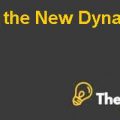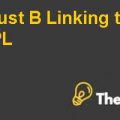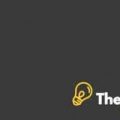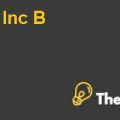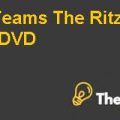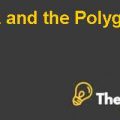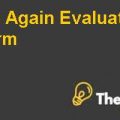
National Oilwell Varco Company Case Solution
The Company’s Cost of Equity
Capital asset pricing model is used in order to compute the cost of equity of National Oilwell Varco. The formula for cost of equity under the CAPM approach is given below:
Cost of Equity = Risk Free Rate + Market Risk Premium * beta
The values for the risk free rate, market risk premium as well as beta are computed from the available net data for the given company, which are given as 1.81%, 7.50%, and 0.75 respectively. By putting these values in the given formula, the cost of capital for the company is computed to about 7.44%.
| Cost of Equity | |
| Risk Free Rate | 1.81% |
| Market Risk Premium | 7.50% |
| Beta | 0.75 |
| Cost of Equity | 7.44% |
The Company’s Cost of Debt
The formula is given below in order to compute the cost of debt of the company from the historical data present in its financial statement:
Cost of Debt = Interest Expense/ Book Value of Debt
It can be seen that the interest expense in the year 2015 was $103, whereas the book value of the debt is given as $ 3,928. By putting these values in the above formula, the cost of debt of the company is computed to be 2.62%.
| Cost Of Debt | |
| Interest Expense | 103 |
| Book Value of Debt | 3,928 |
| Cost of Debt | 2.62% |
The Company’s Weighted Average Cost of Capital
In order to compute the weighted average cost of capital of National Oilwell Varco Company, the formula for its computation is given below:
The weights of the items in the capital structure are computed by dividing that capital with the amount of total asset. The company uses 60% of its overall capital in the form of equity as it can be seen in its balance sheet, whereas the remaining 40% are from the debt obligation, which reflect on its better solvency position.This is because if the company would be highly levered and has no earnings to distribute for its capital funds provider, then the company needs to sell those assets, which could later result in bankruptcy. In addition to this, from analyzing the historical results, the tax rate for the company is 30%.
By putting the values of cost of equity, weight of equity, cost of debt, weight of debt, and the tax rate in the formula, the weighted average cost of capital for the company is computed to about 5.26%.
| Cost of Equity | 7.44% | Cost of Debt | 2.62% | |
| Weight of Equity | 61% | Weight of Debt | 39% | |
| Tax | 30% | |||
| Cost of Capital | 5.26% |
Forecasting of Revenues and Net Earnings
In order to forecast the net revenues and the net earnings of National Oilwell Varco Company for the period of 2016 to 2020, its historical data is used as the basis for forecasting. The forecasting is basically done for the stakeholders of the company in order to evaluate its future potential. The company’s revenues as well as its earnings are currently showing a downward trend because of a number of factors, including the economic factors of the company and the efforts made by the company to meet its financial goals in the future. For the shareholders and the other capital providers, the report could significantly help because they have undertaken risk by providing their funds for the good of the company. They’re main concern is the return potential of the company, which could be forecasted through this report................
This is just a sample partial case solution. Please place the order on the website to order your own originally done case solution.

